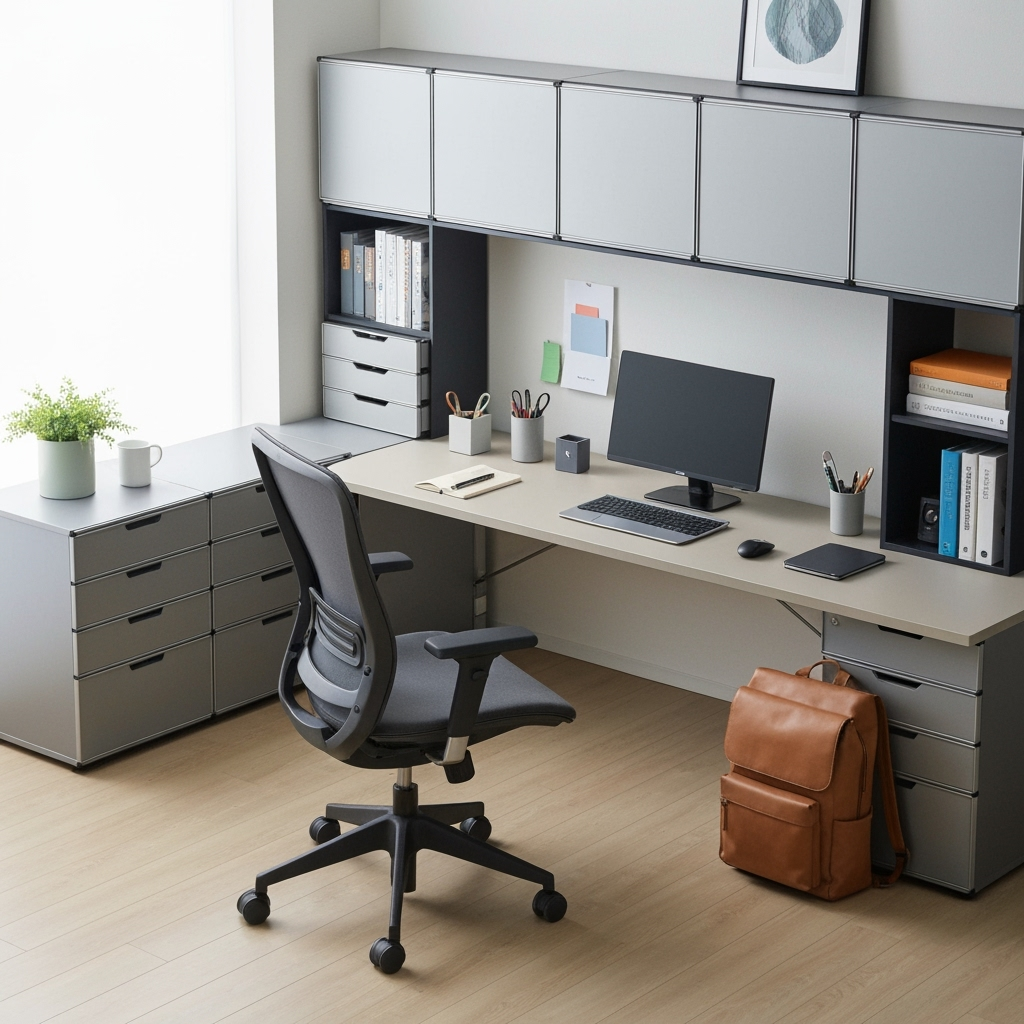Understanding the Hybrid Work Challenge
Transitioning to a hybrid work model presents unique challenges in managing your workspace and equipment. As more professionals split their time between home and office, the need for flexible storage solutions becomes crucial. This guide will help you create an efficient system using self-storage to make your hybrid work transition smooth and stress-free.

Why Self-Storage is Your Hybrid Work Solution
A climate-controlled storage unit can serve as your equipment hub, providing a secure middle ground between your home office and workplace. Here’s how it can benefit your hybrid work setup:
- Secure storage for duplicate equipment
- Climate-controlled environment for electronics
- Convenient access when switching workspaces
- Reduced daily transport of heavy equipment
- Professional organization of work materials
Creating Your Hybrid Work Storage System

Follow these steps to establish an effective storage system for your hybrid work needs:
1. Assess Your Equipment Needs
Start by categorizing your work equipment into three groups:
- Daily essentials (laptop, phone, tablet)
- Occasional use items (extra monitors, keyboards)
- Backup equipment and supplies
2. Choose the Right Storage Unit
Select a storage unit that offers:
- Climate control for electronic equipment
- Easy accessibility during work hours
- Adequate space for your equipment
- Secure entry and monitoring
3. Organize for Efficiency
Create a system that allows quick transitions:
- Use clear storage bins with labels
- Install portable shelving units
- Create designated zones for different equipment
- Maintain an inventory list
Making the Most of Your Storage Space
Maximize your storage unit’s potential with these professional tips:
Equipment Protection
- Use dust covers for electronics
- Implement cable management solutions
- Store items off the ground
- Maintain proper airflow around equipment
Access Optimization
- Keep frequently used items near the entrance
- Create clear pathways
- Use vertical space efficiently
- Install proper lighting
Managing the Transition Schedule
Develop a routine that works with your hybrid schedule:
- Set specific days for equipment rotation
- Create a checklist for transitions
- Plan ahead for meetings and presentations
- Maintain backup solutions for emergencies
Additional Tips for Success
Consider these professional insights to enhance your hybrid work storage strategy:
- Keep a digital inventory of stored items
- Review and update your storage system monthly
- Maintain emergency access procedures
- Consider insurance for stored equipment
Conclusion
A well-organized storage solution is key to a successful hybrid work transition. By implementing these strategies, you can create a flexible and efficient system that supports your professional needs while maintaining work-life balance. Remember to regularly assess and adjust your storage setup as your hybrid work routine evolves.










Leave a Reply